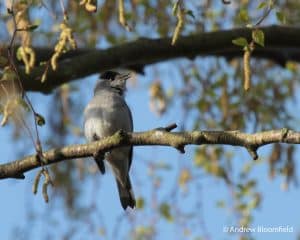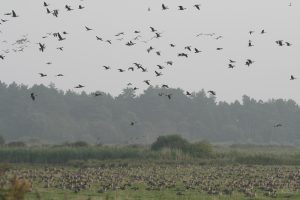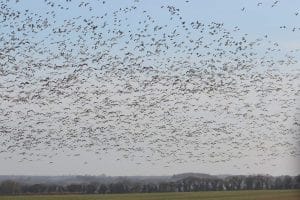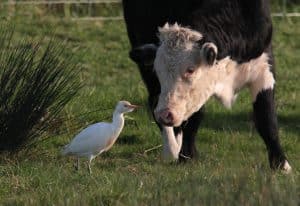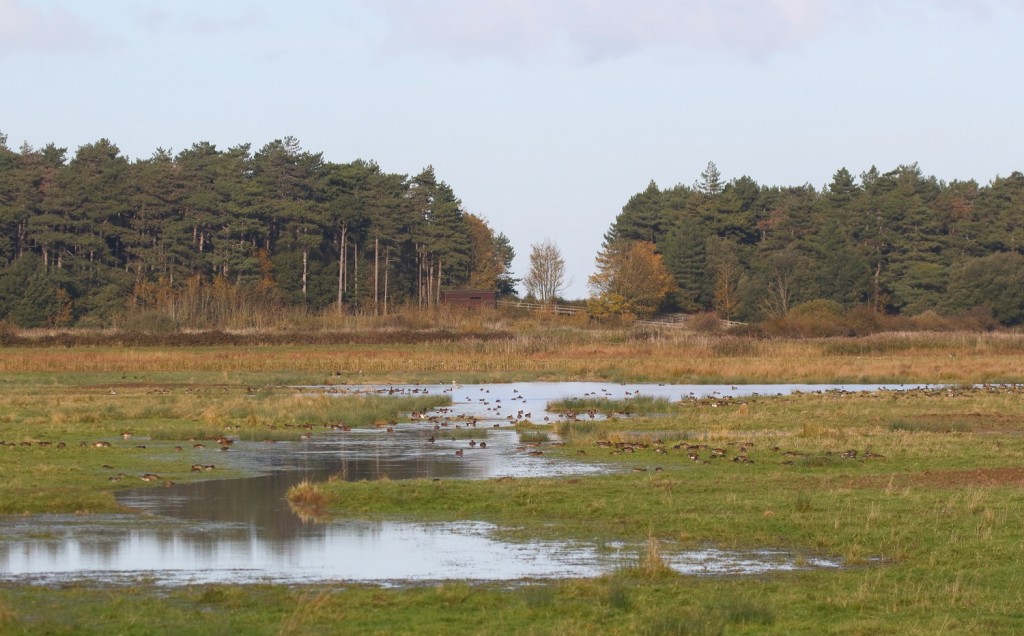
Winter 2020/21 Wildlife at Holkham
January 28, 2021 | Nature news | 5 minute read
When it rains, all eyes usually fall on the grazing marshes of the nature reserve as they collect copious amounts of water transforming the views in just a short few hours. This winter has seen unprecedented rainfall in December (the wettest since 2013) and this followed a very wet September and October. The view across from the coast road bears some similarities in places to those great Fenland washes that typify that landscape. This was not always the case and indeed Holkham’s marshes were once very dry and highly grazed – other parts were farmed for cereals.
When the nature reserve was formed in 1967 there had even been talks of planting trees all over them. Thankfully, that never happened and the Nature Conservancy Council, when they were managing the site in the late 1980s, started off a plan to make all 900 hectares of Holkham’s coastal grassland a proper living breathing wetland that wildlife would flock to. By creating sluices, scrapes and controlling water and grazing levels, within six years Holkham was being lauded as a wetland of national and international importance. Lapwings, Snipe, Avocets and Marsh Harriers were all nesting at previously unimaginable levels and wintering birds like Pink-footed Geese and Wigeon soared in number.

The Grazing Marshes at Holkham with features created for birds to feed in and from
As with all wetland sites, the need for constant management is integral for them to continue to deliver. Sometimes the merest of tweaks in management can be all that is needed for success, whilst a lack of attention to detail might have a negative effect. In relatively recent times bird numbers at Holkham were starting to see a drop. Why was the question. In the last three years, with the Holkham Estate now managing their own marshes, there was more opportunity for experimentation in trying to address the problems.
Superficially the changes were minimal, but by running higher winter and spring water levels, through greater and legal control of certain predators, and with earlier and later grazing both with cattle and sheep, the marshes took on a different appearance. With a shorter springtime grass sward, more Lapwings were inclined to nest, and with a shorter autumn sward more Wigeon and geese grazing occurred. This in turn keeps the grass shorter in readiness for the nesting Lapwings when spring returns. These changes were hardly ground-breaking, but they were of significant impact. Last year, up to 123 Lapwing nests were found (compared to 86 in 2016) that produced 107 fledged young. Hopefully, this will be a level we can not only maintain but build upon.
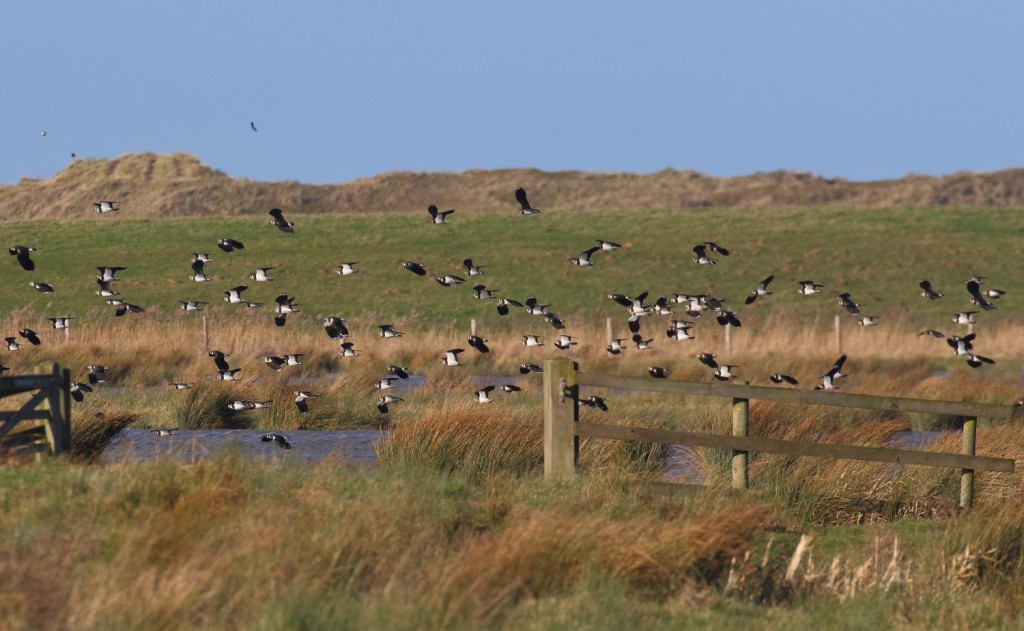
Lapwings flock to Holkham’s marshes in the winter months from the continent
Alongside this, we have also seen increasing numbers of birds frequenting the marsh in the winter months. Water means birds, at a time when many species are moving west or south to escape the ravages of an arctic winter. Following a very wet December, we were pleased to see our largest ever Lapwing wintering population (from a different place to our breeding birds, central Europe) – some 17,000 birds alongside 15,000 Wigeon (from northern Europe and Asia), 3,600 Teal and 29,000 Pink-footed Geese (from Iceland and Greenland). An impressive and truly cosmopolitan gathering of birds that really don’t mind getting wet feet in the winter weather we’ve been having lately!
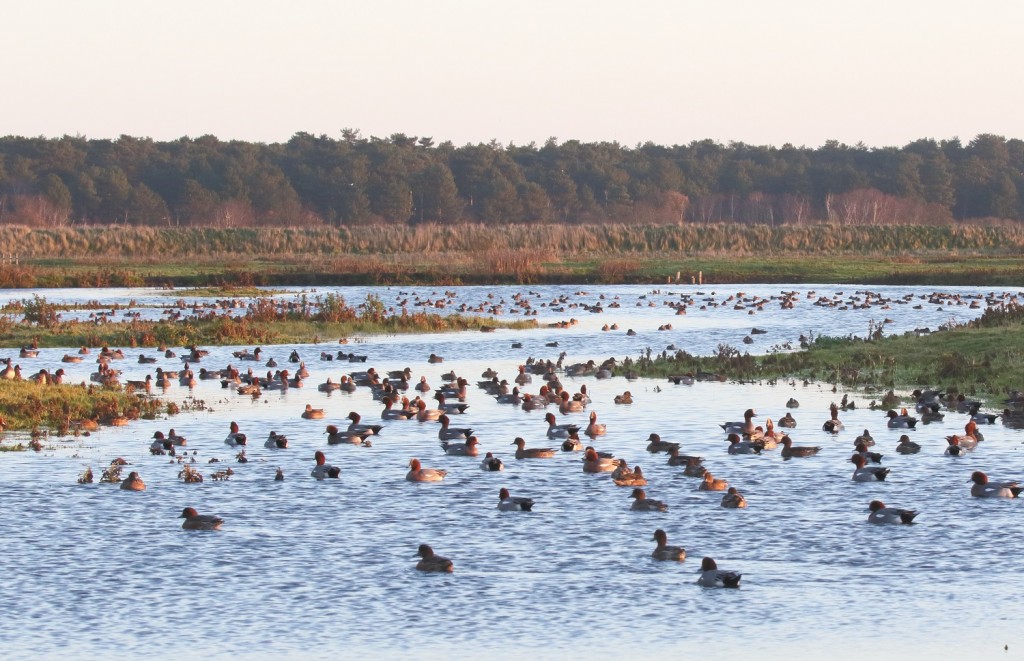
Wigeon flock in their thousands to Micklefleet Marsh beside Lady Anne’s Drive
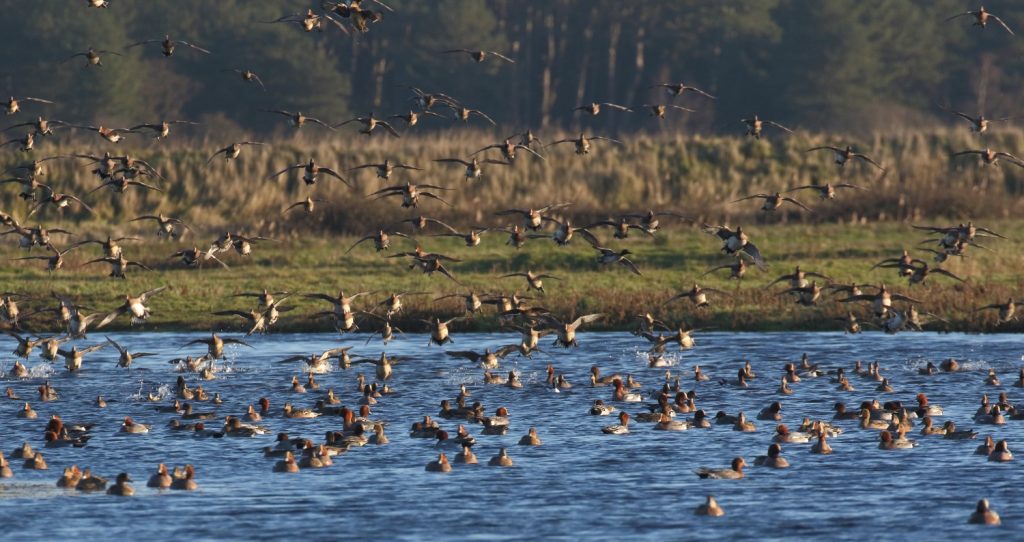
The Wigeon constantly come and go as raptors such as Peregrines and Marsh look for an easy kill
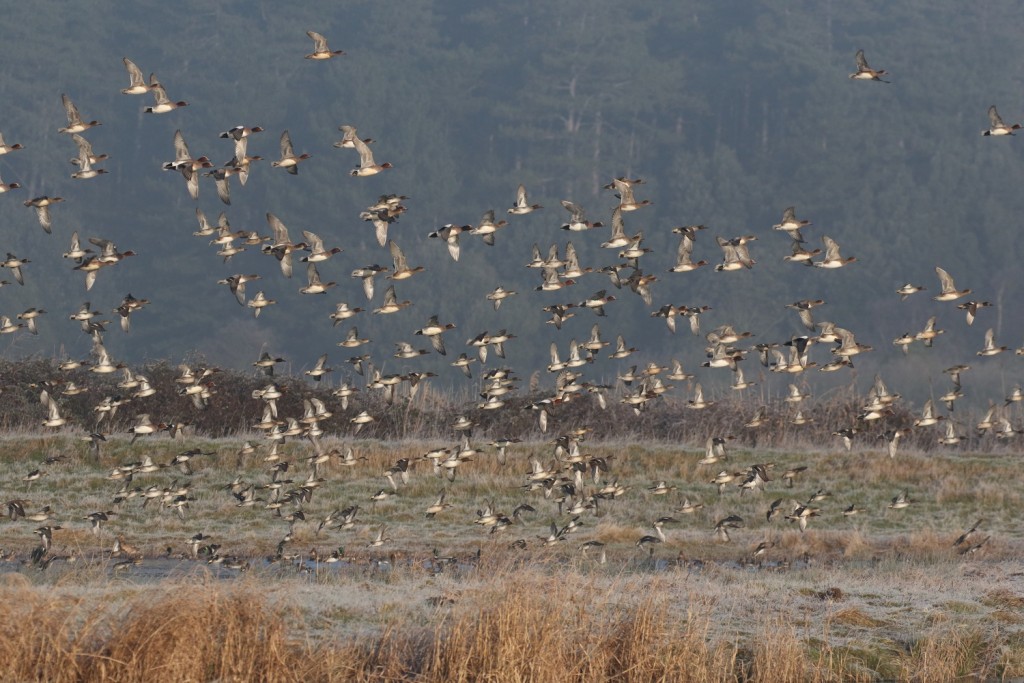
The Wigeon frequently mix up with the smaller Teal, another common winter visitor
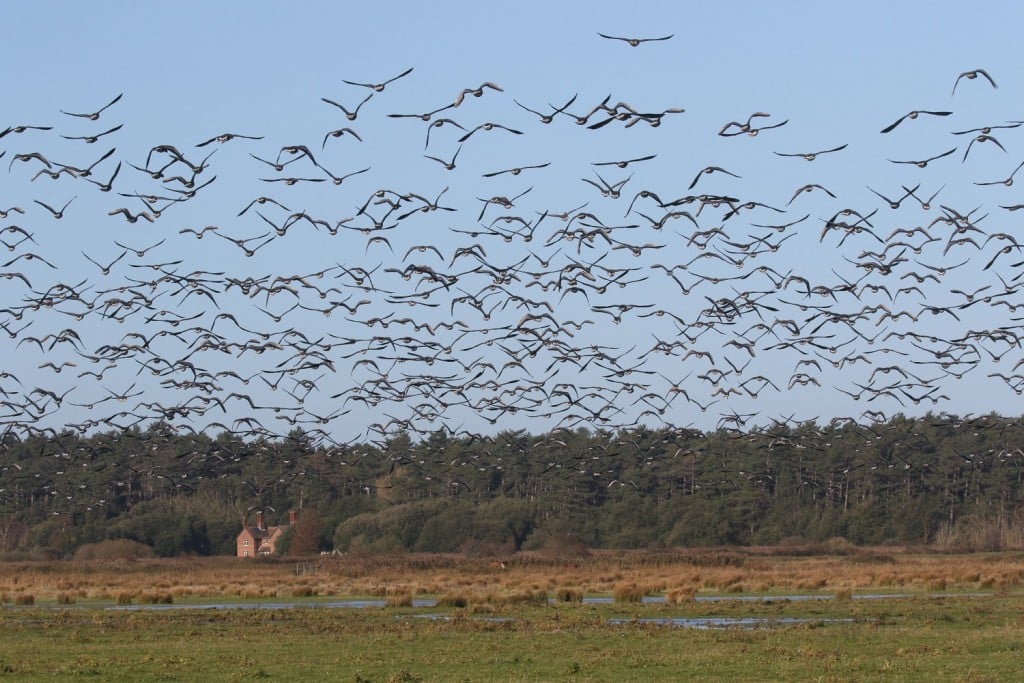
As usual the marshes filled up with thousands of Pinkfeet geese during November and December
View all latest blog posts here.
Back to Journal Back to Journal